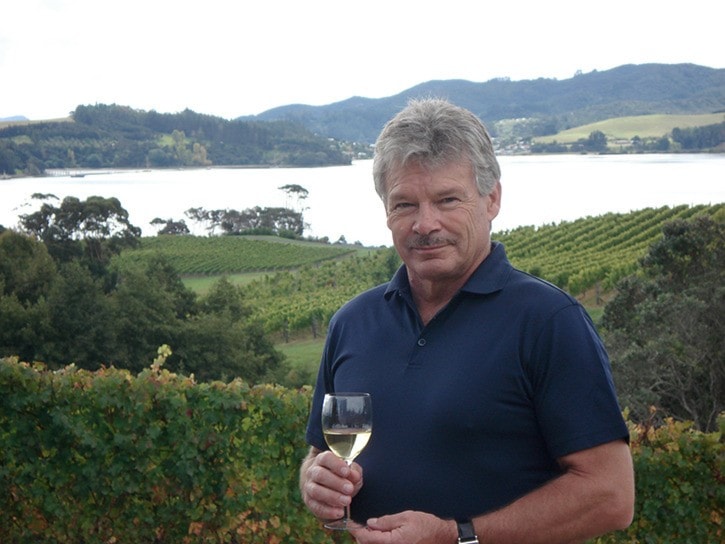“How many winemakers do you think have been the very first to make wine in a new region?” I asked Mark Rattray on the day before he headed back to New Zealand, the B.C. wines now left to the care of Al Hoag, Creston Valley’s first winery owner.
“I know,” he laughed. “I’m just disappointed the statue hasn’t gone up!”
Mark Rattray was contracted to come from New Zealand in 2005 to have input to the construction of Skimmerhorn Winery, the East Kootenay’s first winery and the easternmost in the province. In 2006, he returned to make its first vintage.
Rattray’s early fascination with wine was stimulated by a source I haven’t come across before — wallpaper.
“I guess I was about 14, and I had started accumulating wine books. We had what we called a breakfast room in the house and it was decorated with wallpaper that had names like Scharzhofberger and Cote de Beaune, things like that, and it just fascinated me,” he said. “So I started accumulating books on the subject. I was a founding member of the Christchurch Amateur Wine Society when I was about 15 years old and by the time I was 17 I had the opportunity to do a vintage in Australia, while I was still at school. So I did that. At that time in New Zealand there was hardly any wine industry at all. What there was, was very, very small.”
With not a thought that he might find a career in the wine industry, Rattray headed off to begin his post-secondary education, studying pharmacy.
At the age of 20, though, his break came in the form of a letter from Europe.
“By then I was writing to the Geisenheim (an educational institution) in Germany and they said I’d be able to go and do a year’s practical work first. And so I did that and I’ve never looked back.”
Rattray’s own lack of experience with wine as a youngster growing up in New Zealand mirrored his country’s culture.
“At Christmas my uncle would give me a red wine mixed with lemonade on Christmas Day.” he recalled. “More lemonade than red, of course. I thought that was a fascinating flavour. But my parents? No (as far as serving wine at home). Wine wasn’t really big in New Zealand at that time. We didn’t drink that much wine in the house.”
In Germany, he worked for two-and-a-half years to get some much-needed experience, then went on to school there for another two years. Six months in Bordeaux followed that, then he returned home, where he was hired by Montana Wines, “which at that time was in a prolonged growth mode.” It is still New Zealand’s largest wine company, with five wineries spread around the country.
Rattray can’t help but grin slyly at the thought of the early days in the Kiwi wine business. The 1980s were, apparently, a rough-and-ready era.
“The true story of New Zealand wine has never been told from that time because there was a lot more wine made than came out of the vineyards. There was a fair amount of corruption. “
He pegs 1982 as a watershed year (pun intended).
“It wasn’t until about the early 1980s that the addition of water to wine was actually outlawed. And that’s when the New Zealand wine industry really took off. It’s still young — from 1982 to what it’s achieved in the world is a very short time.”
After five years with Montana, he moved onto another job in the wine industry for five years, the moved to the South Island, where he worked for a small company just outside Christchurch.
His next move was to the emerging wine centre of Waipara. In his 18 years there he established his own winery and helped others with startups.
His winery, Floating Mountain, included an 18-acre vineyard. He had his own wine-making facility, “which a lot of people don’t.” Even today, custom crush facilities are common, as are co-operatives, in which a number of growers invest to build shared winemaking facilities.
Rattray sold Floating Mountain Winery after making his first Skimmerhorn Winery vintage in 2006.
Next week: The Kiwi comes north to Canada and gives outsider’s view of the state of the BC wine industry.
Lorne Eckersley is the publisher of the Creston Valley Advance. His website, www.lorneeckersley.com, features a collection of columns, stories and photographs about wine, beer and spirits, food, travel and arts.
